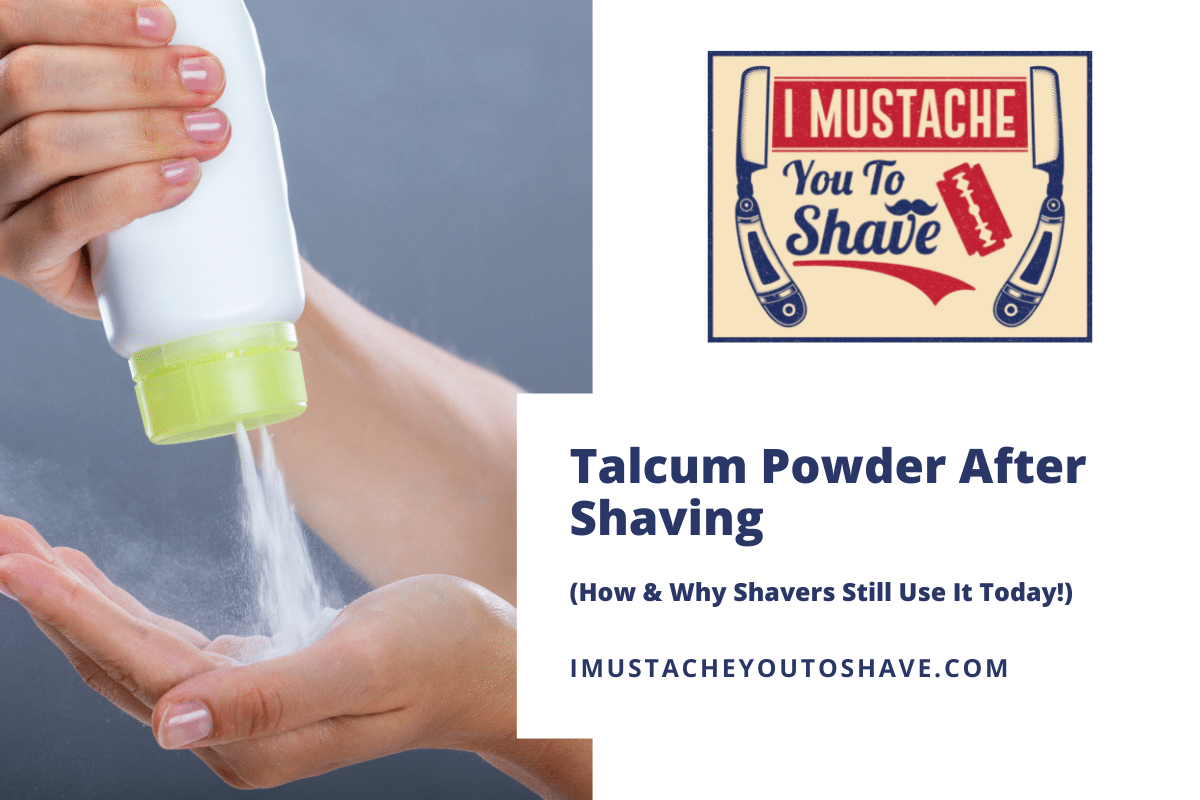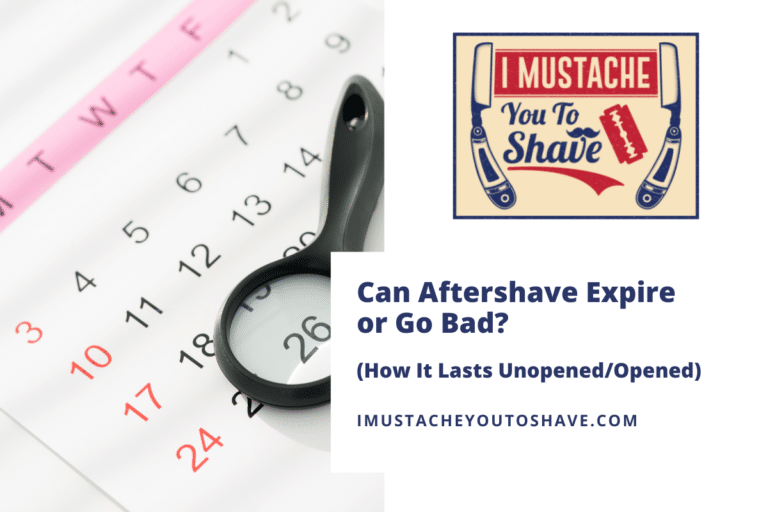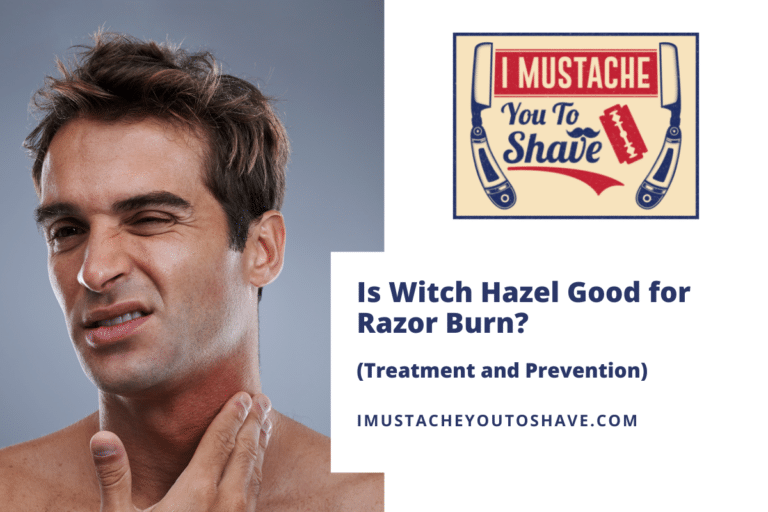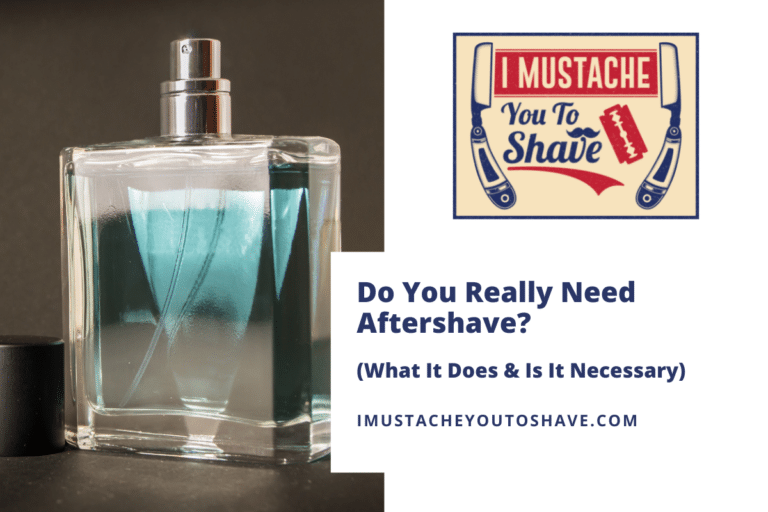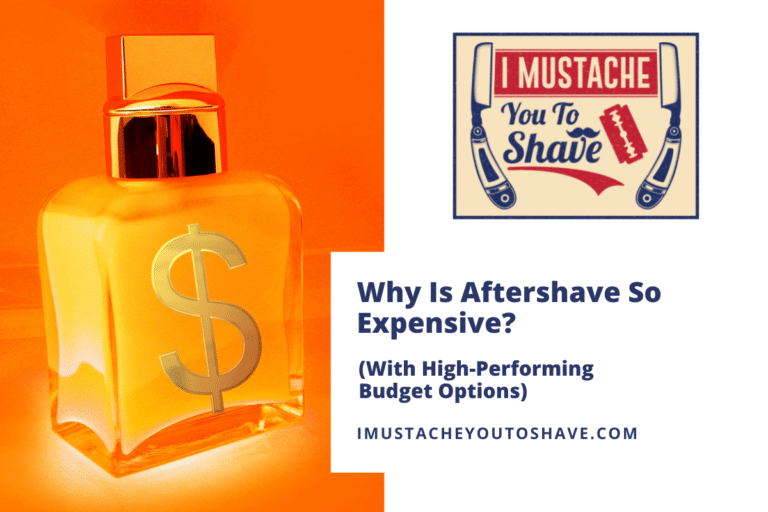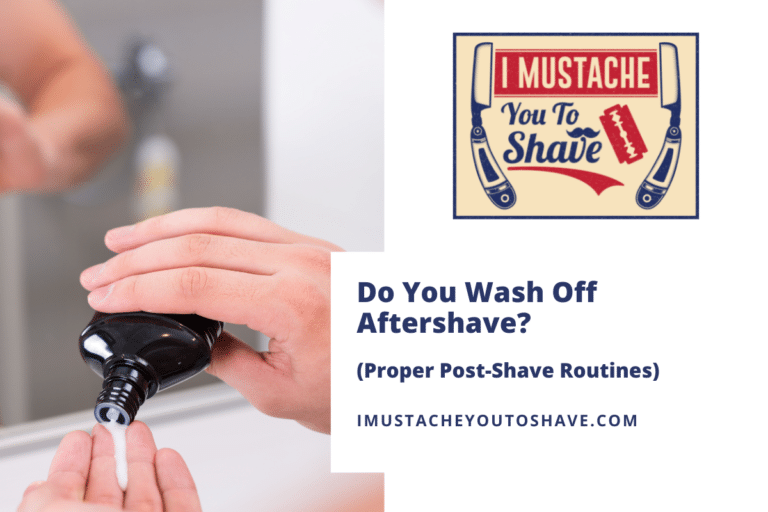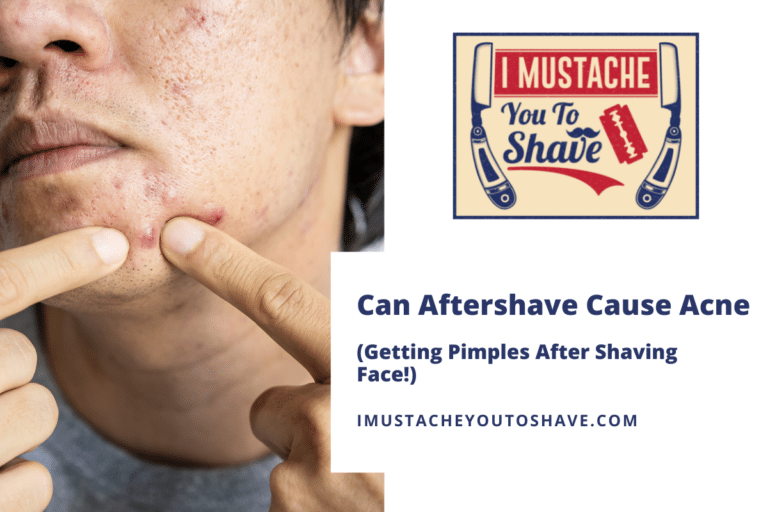Talcum Powder After Shaving (How & Why Shavers Still Use It Today!)
If you were lucky enough to experience a shave in a vintage barbershop, chances are you’ve smelled the unique scent of talcum shaving powder. This fine powder was often used as the last step on the face post-shave or on the back of the neck after a fresh cut.
Talcum powder is used after shaving to provide a smooth layer to the skin while drying up oil and soothing irritation. It was commonly used in barbershops prior to the 1970s. Due to controversy over the use of talcum powder in personal grooming products, many companies have now replaced talc with corn starch.
Read on to learn about the history of talcum powder, the health controversy, and how and why shavers use shaving powder today.
Talcum powder and shaving: a brief history
Talcum powder is made from talc, a naturally-occurring mineral made up of magnesium silicon, oxygen, and hydrogen. Talc was first discovered on a farm in Madoc, Ontario in the 1880s. The finely ground powder has been a useful additive to cosmetics and personal care products due to its oil-absorbing, soothing, and unique feel.
Talcum powder was commonly used in barbershops beginning in the early twentieth century. It was brushed across the face and neck after a shave to decrease skin irritation and absorb oil. It was also a common product found in shaving kits during the 1940s and 1950s.
Popular companies like William’s Aqua Velva, Clubman Pinaud, and Mennen added talc products to their grooming lines so men could experience the talcum ritual at home.
Barbers would dust the powder onto freshly shaved skin and let the astringency of the powder soak up sweat and oil. It was also used to dust the back of the neck after a haircut. The smooth powder helped pick up any small, stray hairs while protecting the sensitive neck area from the rubbing of the stiff shirt collar.
Fun Fact: Talc is the softest mineral. A form of talc is soapstone. Many of the products we use on a daily basis contain talc such as plastics, ceramics, paper, roofing materials, cosmetics, and antiperspirants.
Is talcum powder dangerous to use?
Talcum powder became popular with the launch of Johnson & Johnson Baby Powder in 1894. Research dating back to the 1970s has shown talc particles located in ovarian tumors. The data points to inhalation and perineal application in women being the most dangerous.
Talc minerals are found naturally in close proximity to asbestos. It is possible for talc to become cross-contaminated with carcinogenic asbestos resulting in health dangers. Studies of prolonged use of talc-based products in women have shown a slight increase in ovarian cancer. Studies in talc miners have shown an increase in lung cancer.
In 1973 the FDA required all talc used in U.S. products to be asbestos-free. According to the American Cancer Society, “talc that has asbestos is generally accepted as being able to cause cancer if it is inhaled; the evidence about asbestos-free talc is unclear.”
Asbestos-free talc use has not been banned in the U.S, however, many manufacturers have replaced talc with corn starch because of the negative connotation talc has gained over the past quarter-century.
As late as 2019, trace levels of asbestos were still found in Johnson & Johnson baby powder during FDA testing. This spurred a 33,000 bottle recall and eventually the discontinuation of talc-based baby powder in May 2020.
Many individuals affected by ovarian cancer have filed suit against Johnson & Johnson. There are currently over 1,000 pending cases and J&J has settled for billions of dollars. The risk of liability has prompted many companies to remove talc from consumer products.
Why do barbers use talc powder?
Talcum powder is finely ground talc. It acts as an astringent to dry up moisture like sweat and oil. It also absorbs odors and has a mild styptic effect.
Barbers use talcum powder to dust the back of the neck after a haircut. The fine powder absorbs any moisture, sloughs off stray hairs, and reduces skin friction. They also use the powder on the face and neck after a shave. It is applied after an aftershave lotion or balm to absorb any moisture and reduce skin irritation.
While talcum powder was once a mainstay in old-style barbershops, it is considered a vintage luxury today. Some barbers love to use it, but others think it’s only good for certain clients. It has grown in use among at-home shaving enthusiasts and both talc and talc-free versions are readily available online.
Is talcum powder good after shaving?
Many men love the soft, smooth feel of talcum powder after a shave. There are others who don’t feel this extra step is necessary. Personal preference and skin type will determine whether men will choose to add talcum powder to their shaving regimen.
Talcum powder has distinct advantages and disadvantages. Let’s take a closer look at each to see if talcum powder is a good choice for you.
Advantages
- Absorbs oil & sweat
- Calms skin irritation
- Reduces friction
- Versatile
- Inexpensive
Disadvantages
- Can take needed moisture away
- Messy
- Cancer concerns
- Talc-free versions feel different
Advantages of talcum powder after shaving
Talcum powder offers many advantages to shavers.
The main advantages of talcum powder use after shaving are the absorption of moisture, calming of skin irritation, and reduction in friction. Talcum powder is very versatile and inexpensive.
If you suffer from excess oil, the matte, drying effects of talcum powder are a definite plus. Shavers with sensitive skin will appreciate the calming effect. Talcum powder provides a barrier between the skin and fabric to reduce friction.
Talcum powder is versatile and inexpensive so adding it to your all-over grooming routine is cost-efficient too.
Disadvantages of talcum powder after shaving
As with most products on the market, there are some disadvantages.
The main disadvantages of talcum powder use after shaving are the absorption of needed moisture, the messiness of application, and cancer concerns. Talc-free powders made with corn starch can have an unpleasant feel.
If you are prone to dry skin, talcum powder may overly dry your face. Talcum powder can also be messy when applied since you use your hands or a brush to spread the superfine powder.
The uncertainty of asbestos-free talc on health can cause some shavers to avoid talcum powder altogether. Some corn starch alternatives leave a gummy buildup behind when mixed with moisture.
Who should use shaving powder?
Shaving powder does add an extra step to the shaving process. Is it worth it? Let’s look at the ideal shaver profile.
Since talcum shaving powder soaks up excess moisture, men with oily skin or those who live in hot, humid climates would benefit the most. It is also more suitable for clean-shaven men since the fine, white powder is noticeable in dark facial hair.
Talcum powder has the extra benefit of odor absorption, so if you sweat a lot, it can mask the smell. The good news is that talcum powder is inexpensive, so if you’re curious how it will work for you, give it a try!
The best shaving powder to use after shaving
When choosing a shaving powder, some users prefer to stick to the original talc versions, while other shavers prefer talc-free.
We’ve compiled a list of shaving powders that are top-rated and readily available from online retailers. They come in a variety of scents and price points and range from classic brands to more modern ones.
Our top contenders are:
- Clubman Pinaud Finest Powder
- Proraso Post-Shave Powder
- Borotalco Roberts Powder
- Johnny B. Barber Talc
Clubman Pinaud Finest Powder
This classic aftershave powder has the distinctive Clubman scent.
Priced at $6.29 per 9 oz. container, this talc-free option uses corn starch, kaolin, and zinc oxide to absorb moisture and reduce irritation. With over 6,700 reviews, users love the “cool, calm” feeling it provides post-shave. They also report it “soothes irritation and reduces itching”.
Proraso Post-Shave Powder
Proraso is a professional-grade powder suitable for home use. This talc-free option uses corn starch to absorb moisture. It leaves behind a “soft, powdery dryness” instead of a tight, overly-dry feeling.
Users prefer the mint/rosemary scent and claim it “reduces irritation and breakouts”. The powder comes in a vacuum-sealed foil package for $10. A reusable shaker tin can be purchased separately for easy application.
Borotalco Roberts Powder
Talc is the first ingredient in this imported classic Italian powder. The Roberts company still follows the original 1800s recipe. Reviewers prefer the “silky feel” and “fine, light powder”.
The current cost is seven ounces for under $16.
Johnny B. Barber Talc
This hybrid formula contains corn starch as the main ingredient with talc further down the ingredient list. Some buyers took exception to this, feeling like it was a little deceptive since talc is part of the name. A look through reviews shows this brand is popular among barbers as well as home users. It “soaks up moisture” while preventing chafing. If nicks and cuts are an issue, this formula “comforts skin”. The “light, citrus scent” appeals to buyers as well as the $11 price tag.

